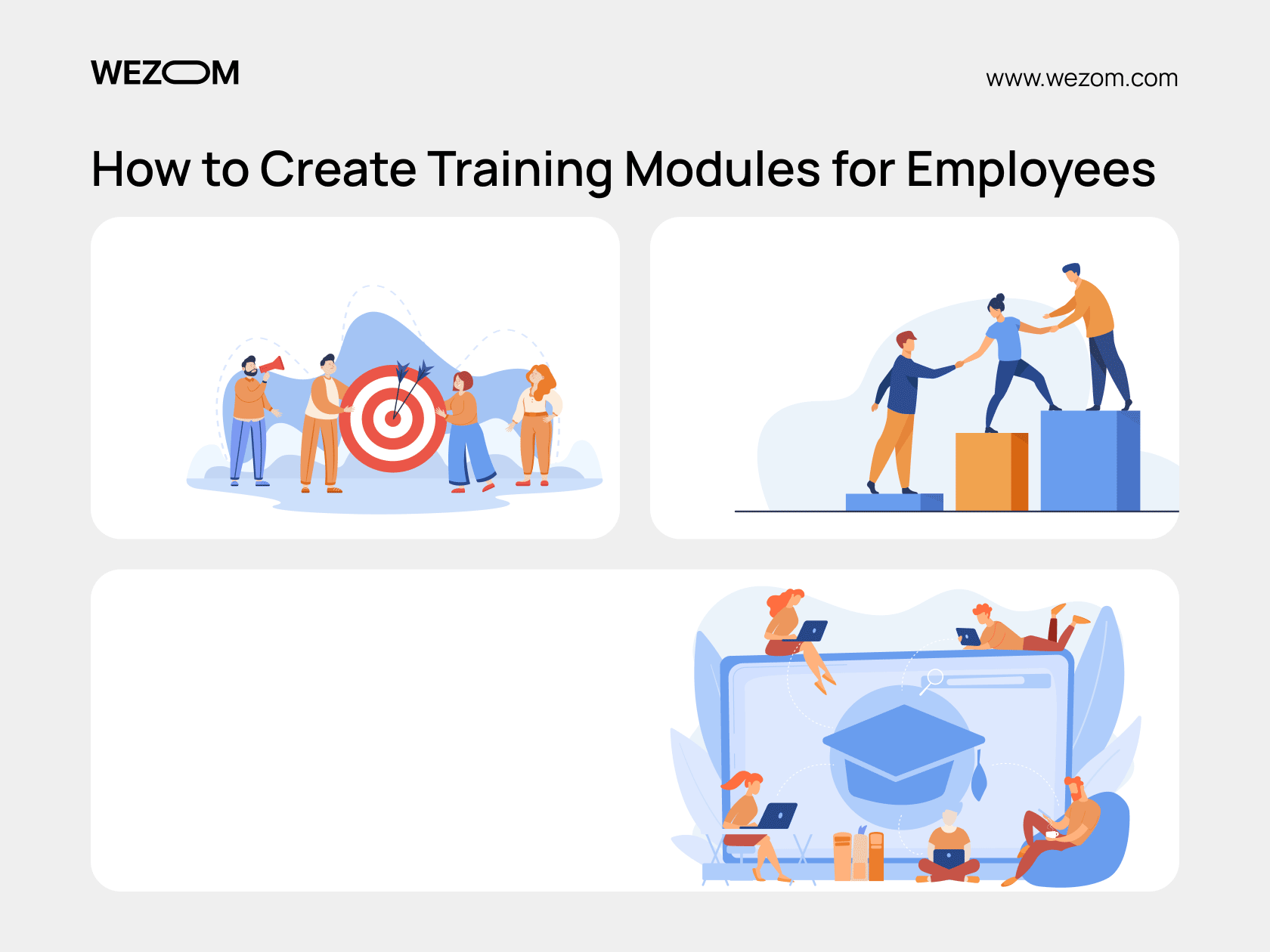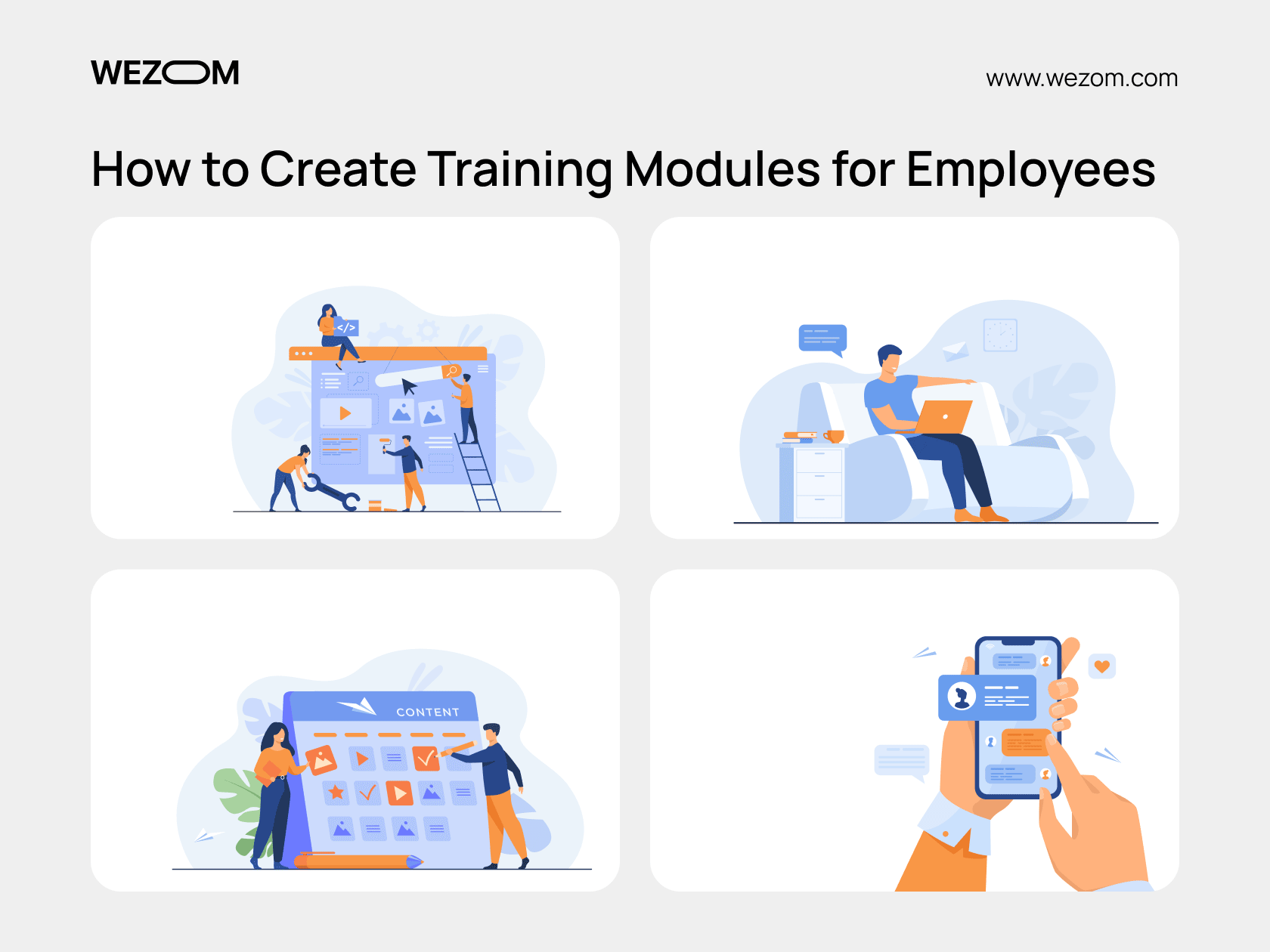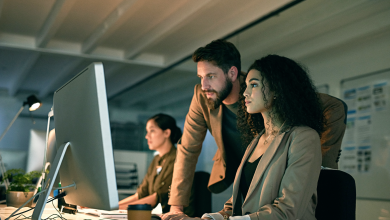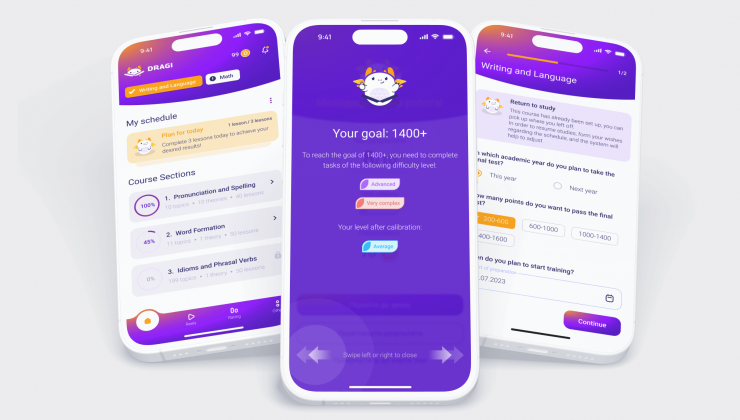An online learning module is a structured part of a course, the components of which should be developed in such a way that students can quickly and effectively perceive and assimilate the information contained in it.
If you are planning to implement such learning modules in your company or you are already in the field of online education, the following information will help you improve your efficiency. We will discuss the different types of training modules, talk about their importance and relevance, and also we will touch on why the creation of such modules with the help of an LMS solution is one of the most efficient options.
Let’s delve deeper into this topic!
Why Are Learning Modules Important for Employees?
Modular learning is a highly productive method that is distinguished by its accessibility, high engagement, and student retention. Learning modules have several key benefits:
- They help students learn new topics way easier and quicker, and they can also assist students in structuring their knowledge as the course itself is segmented and easy to understand.
- They provide comfortable access to educational materials anytime, anywhere if you have Internet access, which significantly expands the educational possibilities.
- They reduce the burden on students since the learning process takes place “in portions” and new information does not pile up in large volumes.
- They allow us to evaluate the efficiency of the work with the help of modules, which helps them to prioritize the right way and to detect their weak and strong sides.
- They help teachers to use different formats and methods of online learning in different modules.
Indeed, creating online training modules opens up qualitatively new opportunities for learning, making it not only more effective but also more interesting. We have already described in one of the cases how our individual LMS solution increases student engagement in online learning, increases the number of sales of IT courses, and optimizes the learning process in general. Check it out if you missed it.

The Types of Learning Modules
Let’s briefly discuss the training module examples that are widely used today:
- Electronic courses. These are courses that are hosted on the Internet so that students always have access to educational materials. Courses may include video, audio, text materials, interactive elements, and more.
- Video lessons. These are short (or not-so) videos that are used for more visual and informative learning. They are often used with other types of learning models such as e-learning courses or micro-lessons.
- FAQ. These are sections that contain answers to frequently asked questions. A fairly convenient format when a student needs to quickly and accurately get an answer to a particular question, and not look for it in larger educational materials.
- Aids. These are visual aids, intended to simplify the processing and understanding of educational information, including tables, charts, maps, formulas, and the like.
- Role-playing games. These are materials that are based on imitation of real or fictional situations in which students must perform certain roles, interact with each other and thereby learn by doing.
- Quizzes. This is the format of a learning module consisting of a set of questions on a specific topic, with or without answer options. A good tool for testing and evaluating knowledge.
Each type of learning module has its own advantages and disadvantages, and the best way to implement them is to combine them.
How to Create Training Modules for Employees
Now let's take a look at how to develop an online training module. This process usually consists of 7 steps:
Defining the target audience
To build an efficient training module, you need to know beforehand, how people will work with it. That is, who is your target audience? It can be different specialists working in different fields. They can be in different locations, they have different interests, goals, preferences, and problems.
All this must be taken into account when developing a training module!
The principle of "universality" does not always work here. No need to try to develop such modules that will be adapted to the maximum possible number of students. Otherwise, they will turn out to be too superficial and not as effective as those tailored for a specific target audience, taking into account all its features.
Defining Learning Objectives
The learning goal should be specific and measurable outcomes that you want to achieve and expect from students after completing the module. Understanding the objectives helps to more accurately determine the structure, content, and methods of evaluation of the module. They also make it possible to focus on the most important and exclude everything superfluous from the curriculum.
Remember: it is important for you not only to give students new knowledge but also to benefit from this knowledge in the end, corresponding to the goals originally laid down. Therefore, until the moment you identify the main goals of training, it is pointless to move on to the next stage.
Choosing the Right Tools
This is another extremely important stage, during which you have to choose a learning management system – LMS (Learning Management System). There are actually quite a few options, including cloud-based LMS, which are distributed by subscription and are quickly integrated into the training system.
Depending on which LMS you choose, the possibilities for creating learning modules, customization, scaling, and integration with third-party applications and services will differ. We strongly recommend that you approach this issue with full responsibility so that in the future you do not have to make an emergency transition to another LMS if the previous one for some reason turns out to be inappropriate or not functional enough.

Creating a Module
This is perhaps the most difficult and responsible step because the creation of a module is the most time-consuming step. You should follow a logical sequence of actions that will help you properly organize the learning content:
- Introduction: This is where you should present the topic of the module, learning objectives, length of study, and expectations of the learners.
- Body: This is where you should state the main concepts, facts, principles, or procedures related to the topic of the module. You must use a variety of content formats such as text, audio, video, graphics, or animation. In addition, it is worth including interactive elements such as questions, tasks, scenarios, or games to increase student engagement and retention of the material.
- Conclusion: Summarize the main points of the module, make recommendations for further learning or practice, and thank the students for their work.
It is not always possible to create the optimal structure and content of the modules the first time, so they often have to be finalized and improved. This is normal practice and should not be feared.
Trial Run of the Module
Before publishing, a learning module should be checked for errors, inconsistencies, ambiguities, or problems in operation. You can do it yourself or involve colleagues. It will also be very useful to try it out in a focus group, which will help identify the strengths and weaknesses of the module for its further improvement even before publication.
At this stage, you need to make sure that the module meets the learning objectives, the needs of the students, as well as the technical requirements. You should also check whether the module is easy and comfortable enough to pass, and how effective it is in achieving specific results.
Publishing the Module
After all the steps are taken, you can publish the module and make it available to the target audience. You can use various channels to deliver your modules, such as email, website, social media, or mobile apps. Choose the channel that is most convenient and accessible to students. We also recommend that you additionally inform them that the module is ready for use, tell them how to get access to it, what are the deadlines and requirements for completing it, etc.
Collecting Feedback
It is very useful to receive feedback from students and find out in this way whether they like or like the training module, whether they learned valuable knowledge and skills from it, what helped them and what hindered their learning, what can be improved in the future, and what is already working great.
You can use a variety of methods to gather feedback such as surveys, questionnaires, interviews, or, again, focus groups. Analyze the information received and use it to further improve the quality and effectiveness of the training module. This will help bring it to the ideal and eliminate all shortcomings.

Start Creating Learning Modules with the Help of LMS Solutions
The convenience and ability to create functional and user-friendly learning modules largely depend on which LMS you use. We have already talked about when you should use cloud SaaS LMS, and when you should use Self-Hosted LMS.
Here we emphasize that our LMS are developed for the needs of each client and open up wide opportunities for creating and implementing training modules in the training system. The process is as intuitive and fast as possible – an online training module can be implemented in just a few minutes and for this, you do not have to contact a specialist or provider, as is the case with SaaS LMS.
If you want to learn more about our offer or are ready to use WEZOM services for the development and implementation of an LMS system, please contact our manager to discuss the details and get a free consultation. Our cases of LMS development will help you better understand how the quality of the development process affects your results.



